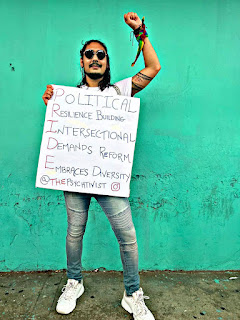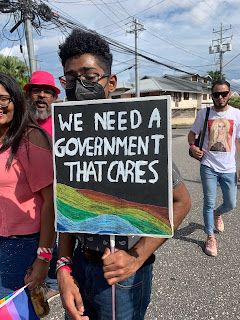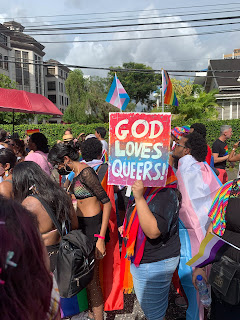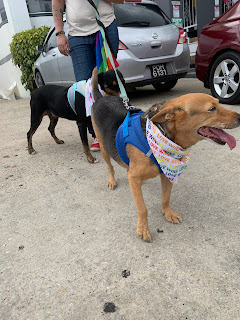What Pride Means to Me: Part 2
Despite the strike down of the buggery law in 2018 that marked a significant milestone of success for the LGBTQ+ community, I cannot help but feel disenchanted that there is still no legislation that explicitly protects against violence and discrimination based on sexual orientation and gender expression. This disenchantment framed my initial mood going into Trinidad and Tobago’s Pride parade this year. I felt that more people needed to mobilise in protest to demand reform and I had no intentions of attending the parade in celebration but rather to remind people that Pride is political. However, these sentiments changed upon the commencement of the festivities.
Seeing the crowd of queerfolk and allies breathed a sense of life into me, especially after two years without any parade in light of COVID. I was quickly reminded of some important reasons for having this parade. Unfortunately, the experience of being queer and trans for many of us is framed by shame, guilt and trauma. We have been demonized and condemned to the margins of society. Pride is about stepping out from these margins marked by social and cultural norms and claiming physical space. Expressing my initial thoughts to a friend and fellow feminist, she reminded me that even though there is much work to be done around legislation, Pride as a parade is equally important for the visibility of queer and trans people and key to making social and cultural change. I was also reminded that Pride, in this way, is a political event and that healing is an act of resistance.
The jovialness on this day characterized by bright pops of colour and music blasting from the sound truck we trailed was contrasted by a more sombre moment when the parade stopped in observance of a ceremonial tree planting at Nelson Mandela Park. At this point, we shared a moment of silence in remembrance of members of the community who are no longer with us, which brought tears to many of our eyes. As I held on to my friends in a moment of comfort, a passerby placed a knitted scarf in the colours of the rainbow around one in my group. It was an endearing moment and a gesture that seemed to say “I see you and I share in your grief.” Pride is also standing in solidarity with each other. It is about supporting one another and sometimes that just means showing up and being present.
Having realized the need for healing, support and community for queer and trans people has also guided my decision to create a virtual support group for them. My vision for this group is to provide a safe space for queerfolk where we can support one another in a way that nurtures our mental well-being. This year, Pride has had an unexpected impact on me that will inform my future efforts as a feminist and LGBTQI+ activist. Since I last reflected on the idea of Pride in What Pride Means to Me, I’ve had a lot of new thoughts about it. I think it means everything I have mentioned here but what I have also realized, is that Pride can have as many meanings as there are people — and even more.
- (Photos by: Scott Marchack and Peter Sheppard)





Comments
Post a Comment